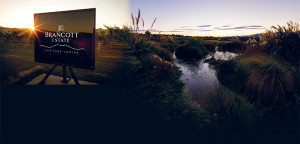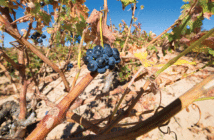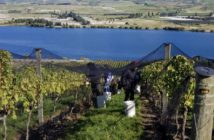
From planting wild flowers among the vines to encourage bees and cut mowing costs, to barcoding vineyard blocks at harvest time, innovation is at the heart of Pernod Ricard Winemakers New Zealand.
From planting wild flowers among the vines to encourage bees and cut mowing costs, to barcoding vineyard blocks at harvest time, innovation is at the heart of Pernod Ricard Winemakers New Zealand.
“Innovation has been a key driver for us throughout our history,” says the company’s chief winemaker, Patrick Materman.
“For Brancott Estate, it began when we first planted vines on Brancott Vineyard in 1973. For Church Road, it goes back even further, as one of the oldest wineries in New Zealand and the first to craft high-quality wines in the style of the great wines of France.”
A focus for Brancott Estate has been on its highly-rated Marlborough Sauvignon Blanc range.“Arguably the largest innovation programme in recent years was our ‘icon’ project which started with the idea of creating a Marlborough Sauvignon Blanc that would rival the top wines around the world,” Materman says.
“We started this project by questioning every aspect of the winemaking process, from the soil the vines were planted in through to the time in bottles before the wine was made available.
“We undertook an extensive research programme on thiols, the compounds in Sauvignon Blanc that give its distinctive aromatics, looking at how the grapes were harvested, pressed and fermented. This knowledge around thiols has had a major influence on our icon wine, Brancott Estate Marlborough Chosen Rows, and also on other expressions such as our naturally lighter in alcohol wine range, Brancott Estate Flight and oak-influenced Fumé Blanc.
“A lot of Sauvignon Blanc drinkers are recognising this is a wine that can offer great variety, and they are looking for new and interesting expressions of their favourite wine. Having this detailed and robust understanding of our region and our ‘raw ingredients’ has allowed us to take advantage of this trend.”
Another recent innovation involves ‘barcoding’ of vineyard blocks at harvest time. Adapting technology from the supermarket industry, the system uses electronic shelf labels to allow crop data to be updated instantaneously from the winery system. The resultant data is more accurate and quicker to access, allowing more accurate planning and greater efficiencies across all stages of the harvest.
“We only have around six weeks to pick all the fruit for the year,” Materman says. “If, like us, you have different varietals and vineyards in numerous locations, there is a lot of information to decipher in order to make the best picking decisions.”
The barcoding system was the brainchild of staff in Marlborough, who won a Patrick Ricard Entrepreneurship Award (PREA) for their innovation. The annual global awards celebrate employees’ initiatives.
“Ideas are judged based on innovation and the benefits to the business,” Materman says. “Some of these ideas are really simple, like including icons on hard hats that show what critical skills the wearer has, making it easy to identify someone who is qualified to work at heights or drive a forklift.”
Innovation is also central to Pernod Ricard’s dedication to reducing its environmental footprint.
“In many cases, environmentally friendly solutions can be more cost-effective in the long-term,” Materman says. “For example, reducing packaging and water consumption offers cost savings, as well as benefiting the environment.
“In the past five years, we’ve reduced our packaging by more than 13,500 tonnes, as well as decreasing our greenhouse gas emissions by 30 percent per bottle over the same period.
“Over the past nine years, we’ve implemented more than 300 measures to improve sustainability. Some of these are significant equipment and system upgrades while others are smaller-scale. For example, some of the vineyard workers realised that planting wild flowers in the vineyard reduced mowing fuel costs and supported the vineyard ecosystem by attracting bees and other insects. When you add up 300 ideas like that then the impact becomes significant.”
Brancott Estate recently teamed with start-up specialist BlueChilli to create the AUD$35,000 cash prize Winexplorer innovation challenge, inviting ideas to revolutionise how people enjoy wine. Ideas that made the finals included:
• An app that crowd sources ratings for winery experiences and creates self-drive tours
• Screwcap technology to enhance flavours and aromas to individual tastes
• Wirelessly integrated stoppers to monitor quality of opened wine
• A cellar management system using storage conditions to determine when each bottle is at its peak and
• An online self-directed wine tasting experience for consumers to discover new wines and regions.
“We are very excited to see such a breadth of ideas approaching the wine experience from so many different angles,” Materman says.
“We are keen to strengthen the link between innovation and wine because it’s an industry that is often perceived as being traditional but the wine industry in New Zealand is extremely resourceful and innovative and there is a lot of work being done, particularly around sustainability.”




























































































